Japan is a large and dynamic country; the main island of Honshu is 810 miles long, a little bigger than Great Britain. The famous large cities of the South often overshadow the meandering farm fields, apple orchards, and small country mountain towns of Northern Japan.
Some links on this page are affiliate links. We may earn a commission if you make a purchase, at no additional cost to you.
In the north, winters are long, dark, and cold, with four-foot icicles running the full length of rooftops. They receive anywhere from 300 to 600 inches of snow yearly, making it one of the snowiest places in the world.
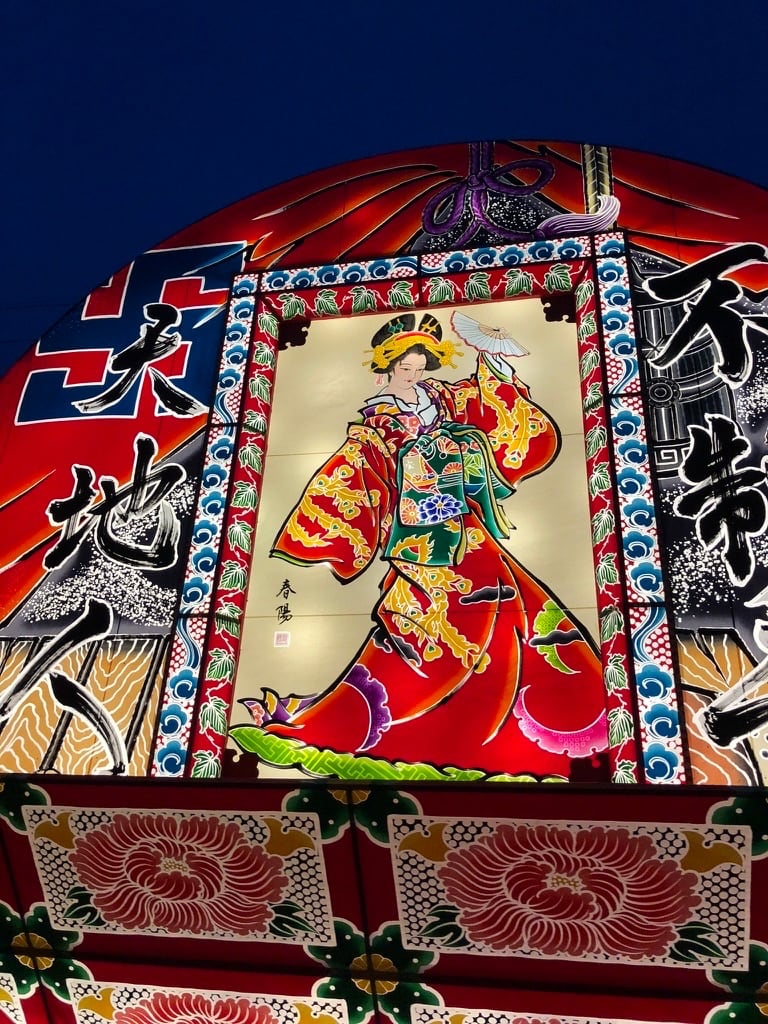
When the winter melts away and the summer sun comes around, Northern Japanese are ready to celebrate. Locally the Northernmost region on Honshu, named Tohoku is famous for its summer matsuri (festivals).
Each festival is truly unique. This trip is exciting and rewarding, as the towns aren’t far apart, so several festivals can be enjoyed in one week.
Trip Planning Tips
Airfare deals – find your best deal.
Lodging deals – from capsules to luxury stays.
Guided Tours – customized or pre-made.
Travel Insurance – just in case.
SIMs/eSIMS – data or voice, text, & data. 25% off long-term voice, text, and data
Before you go, double-check the dates; some years, they change. Note that most of the main roads in Japan are toll roads, and the fees can get expensive. Be prepared with cash. Use Nexco toll calculator to estimate expected tolls to and from your destination. Dues sometimes change during busy times and weekends.
Kuroishi Neputa July 30
Held every July 30, and August 5, Kuroishi is a small castle city in the mountains with a population of 31,000 people. The Kuroishi Neputa Festival dates back to the Edo period (1603-1868).
Fifty-plus floats are pushed and pulled down the parade route. They are massive and fan-shaped, with men on top chanting and beating drums. The floats are vibrantly painted with dramatic, colorful details. The scenes flow seamlessly, covering the entire float with details of women in kimonos, warriors fighting, botanical scenes, handwriting, and folklore.
The parade begins only a few blocks South of the famous Nakamachi Komise-dori street. A historic lane lined with saki breweries and shops. The sidewalk is covered to keep pedestrians warm and dry from snowy conditions and dates back to the Edo period.
Hachinohe Sansha Taisai (Three Shrines) July 31
Sansha Taisai originated in 1721 when a procession of portable shrines was carried through town. They continued the ritual each year, adding ornate floats and tiger dances. The procession is an opportunity to express gratitude, have a good harvest, and be healthy.
The floats in Hachinohe are ostentatiously adorned with large, colorful mannequins of humans, horses, tigers, snakes, fish, dragons, demons, and gods. Huge backgrounds tie the stories together and are accompanied by flute and drum players. It is a busy, crazy, loud, and fun festival with bright and colorful costumes. The crowds drink beer while eating street food and crowding onto street corners.
Morioka Sansa Odori, the world’s largest drum and dance parade August 2.
Sansa Odori holds the world record for the most drummers at one time. It’s a parade of 3,000 drummers, all playing simultaneously to taiko drum beats.
Sansa Odori folklore tells the story of a demon-tormented town hundreds of years ago. Locals prayed to a deity for help; he listened and saved them from the demon. The townspeople celebrated with dancing and music, starting what is still celebrated. After the parade, onlookers are invited to dance in the streets.
Akita City, Akita Kanto (Pole Lantern) August 3
Akita Kanto, originated in the 1700’s was meant to keep away drowsiness in the summer heat. Farmers were often sleepy, so dancing and drums were meant to keep them awake with the triple benefit of purifying the area, keeping evil spirits away and wishing health and a bountiful harvest. Townspeople would hang lanterns off of bamboo. The bamboo sticks gradually grew to hold more and more lanterns until it became what it is today.
Lanterns are hung off long bamboo poles 39 feet (12m) high with several horizontal poles attached across to hold the lanterns. The poles weigh up to 110 pounds (50 kg) while holding up to 46 paper lanterns still lit with real candles. Pole carriers known as “sashite” train all year to hold and carry the poles during the festival. They use 5 techniques: passing the poles, using the palm of the hand, and balancing on their foreheads, shoulders, and lower back.
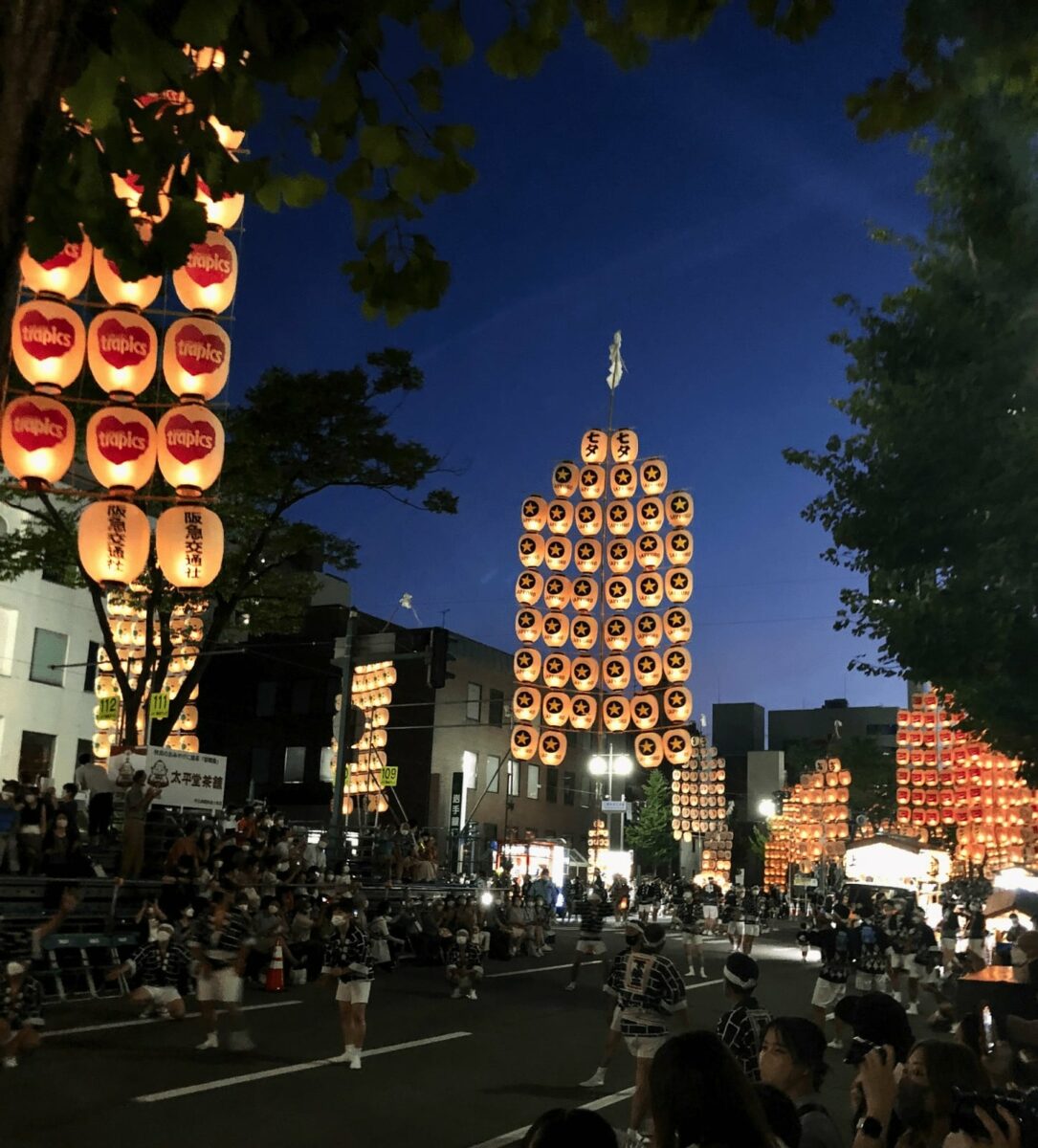
Competitions are held during daylight hours between the sashite in the different categories. The festival draws over one million people each year, mainly at night when thousands of lanterns glow and flicker all through the streets. 250 poles at a time are raised up to 40 feet in the air. Streets are filled with pole carriers dressed in white pants with headbands, balancing massive, glowing poles that are passed among the performers every few minutes.
Aomori Nebuta August 4
The Nebuta Festival is held every year between August 2-7. It began in the Edo period between 1603 and 1868; the exact date is unknown.
The origins of the festival itself are folklore, as no one knows exactly why it started or the reasons behind it. The Nebuta Festival is the most famous of them all, a perfect conclusion to an exciting week of celebrations.
Colossal, colorful floats are carried down the streets and lit from within. It’s considered a fire festival and is the most famous festival in Northern Japan. Skilled artisans work full time all year creating them. Each matsuri has a theme from myth and folklore.
They are first conceptualized on paper. The shape of the float is then created with wood and chicken wire and electrically wired to contain hundreds of lightbulbs. The chicken wire, or form of the float, is then covered in paper and artfully hand-painted. Meticulous care is given to every detail, from the perfectly proportional fingers to the tiny pattern on the fabrics of their clothes and even the individual hairs on their heads.
The festival begins at night. If you’re early enough, you can purchase tickets to sit on chairs with a guaranteed view of the floats. You can also watch for free on the street like most of the locals.
The festival culminates on the last evening when the three highest-rated floats sail through the port and Mutsu Bay under a brilliant fireworks display.
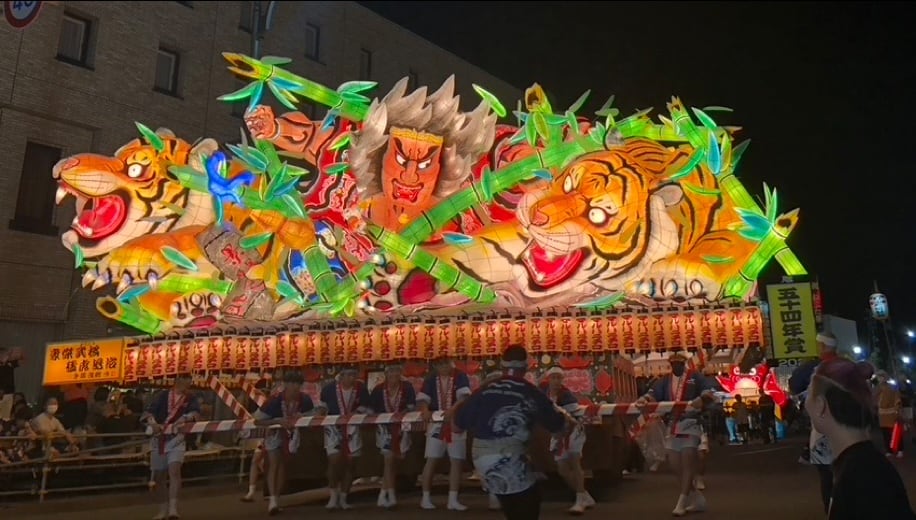
If you aren’t fortunate enough to make it during the festival, you can see the best and highest-rated floats from the year before on display at the beautiful Nebuta Museum WA RASSE, an impressive building located on the Aomori port. Every hour, museum staff give a taiko drum performance, and patrons are encouraged to dance and attempt the drums for themselves.
A few notes for matsuri (festivals)
Bring picnic blankets and stake out your spot early for the more popular festivals. Most people bring wide tape to stick the mats and blankets to the street in case it’s windy. You can leave the picnic blanket there and walk away to get food and explore. When you come back, your place will still be held.
Street food in Japan is fantastic and even better at festivals. It’s worth noting that eating while walking is generally frowned upon and considered rude. It is sometimes overlooked in festival settings, but it generally still holds. Pay attention to what others are doing. Sometimes, there is a designated eating area, or people hide behind the vendors, finding grass to sit on.
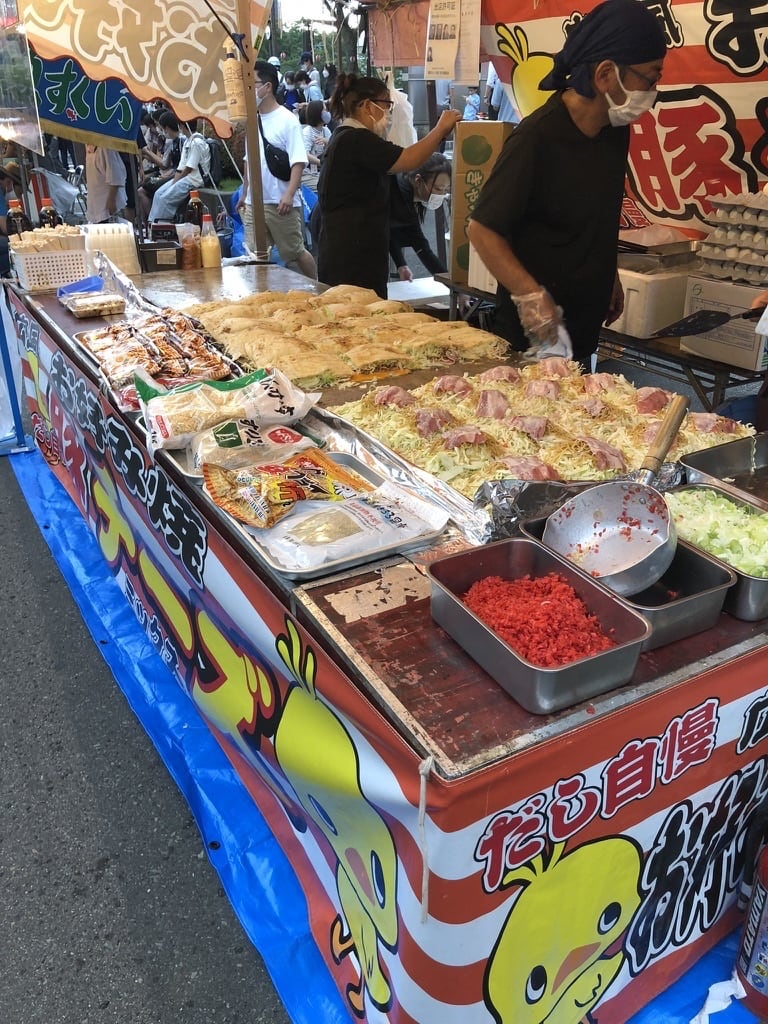
The great Tohoku Festival week is one you will never forget. One of the best things about Northern Japan is the lack of tourism. All of the main cities are in the South, at least 9 hours away by car, making the North isolated and relatively untouched by tourism.
Rolling rice patties, apple orchards, and fields full of 3-foot-wide burdock leaves pass by from car windows. If you’d like a taste of authentic, untouched Japan, these festivals are one of the best ways to get it.
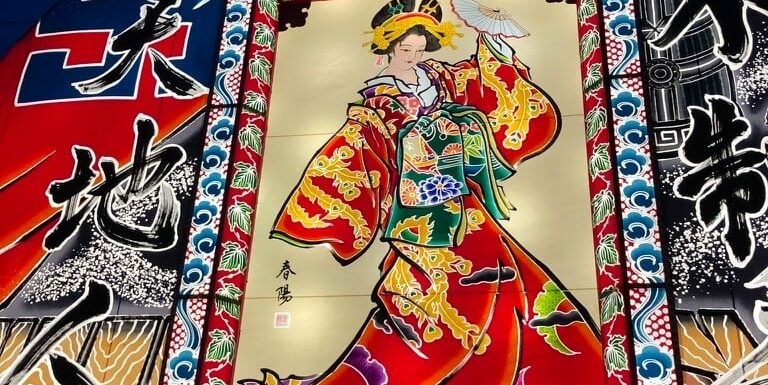
Leave a Reply